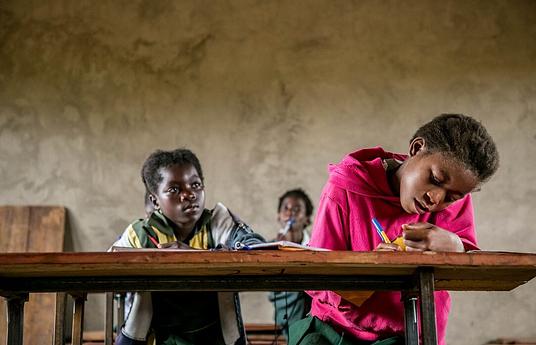In rural India, children do not pursue higher education opportunities due to a lack of foundational knowledge and skills and limited access to opportunities. Even students who complete school often struggle to pursue higher-ed opportunities because of low proficiency in English and key socio-emotional skills and dispositions. This impacts their confidence and limits their access to opportunities.
ROPE integrates English language learning with socio-emotional skills and dispositions like collaboration, critical thinking, curiosity, grit, and empathy. The program is divided into 4 levels and aims to progressively build these skills and dispositions. The program curriculum begins with phonemic awareness in level 1 and ends with advanced reading comprehension and oral comprehension skills in level 4.
The key features of the program are:
- English literacy is integrated with socio-emotional skills and dispositions and themes of self and civic awareness
- The curriculum is contextualised to the geography and socio-cultural elements of the area
- It is evidence-backed to support ESL learners better
- The program is proficiency-based and not age-based
Each level is a 3-month-long blended learning experience with a pre-designed curriculum and pedagogical approach, where students engage in a guided hour-long learning experience each day to build the key skills.
Program started with 2 out of 4 levels, 2 teachers and 19 students in a 3-month cycle. Today, we run 4 levels of the program with 7 teachers, an integrated student curriculum & 60 students engaged in each of the 3-month cycles. In last 2 years, we executed 6 cycles of the program with students in 12 villages. All our teachers come from the same community as our students, and 3 of them were students in the program till 6 months ago. We have created 20 contextual storybooks, used as learning resources in the program and freely available globally. Students from the program have participated and shared their voices on national platforms.
Over the next 2 years, we will make the curriculum & operational model of the program accessible, for free, across the globe, especially in rural regions.
1. Build a team of teachers/ facilitators who believe in building safe learning spaces integrated with socio-emotional learning
2. Till our curriculum is not freely available, contact Shrutika Silswal at shrutika.silswal@sef.org.in
We will provide you with support with operational processes, student curriculum, assessments and data systems to track progress in language and socio-emotional skills.
.jpg)


